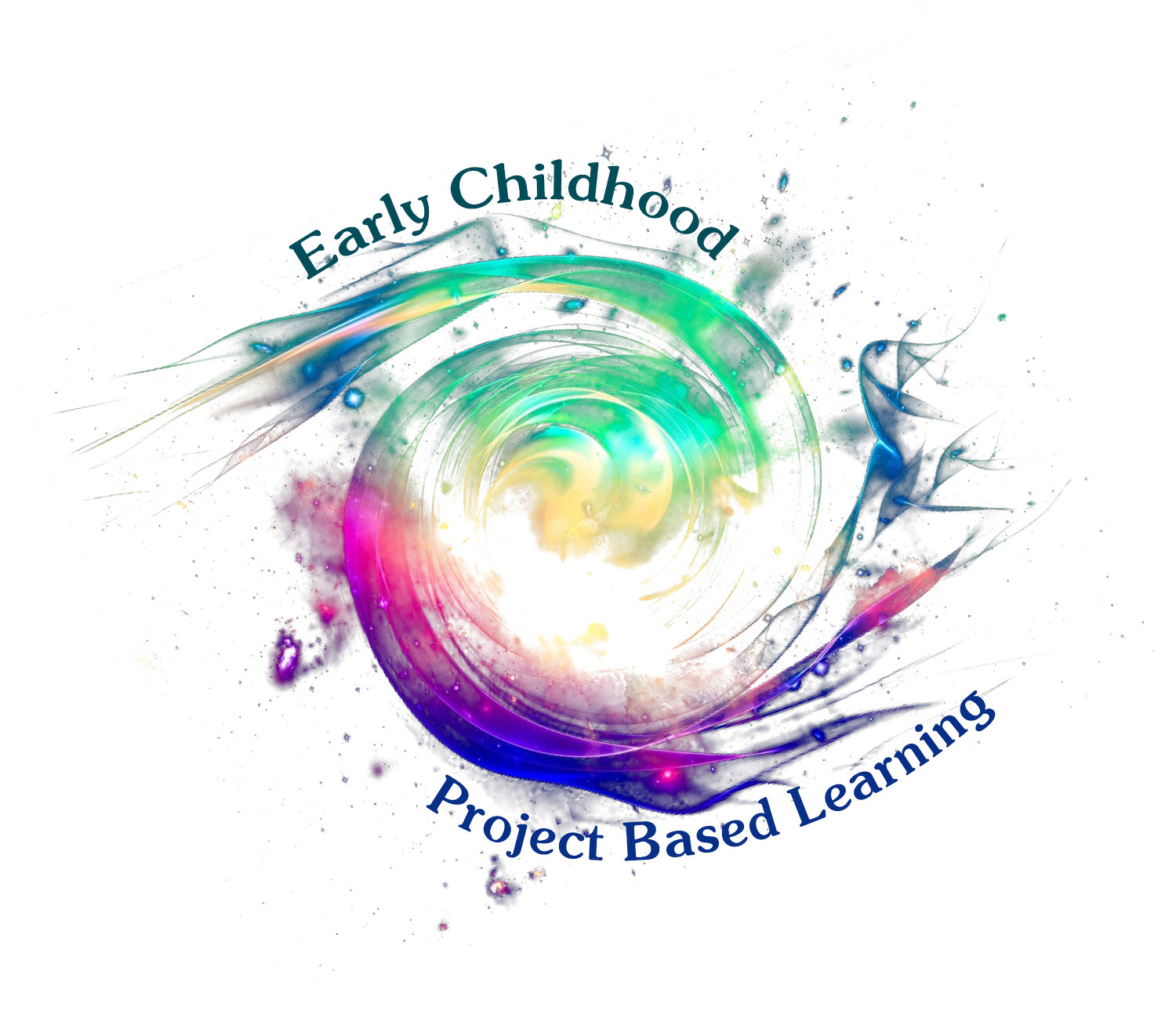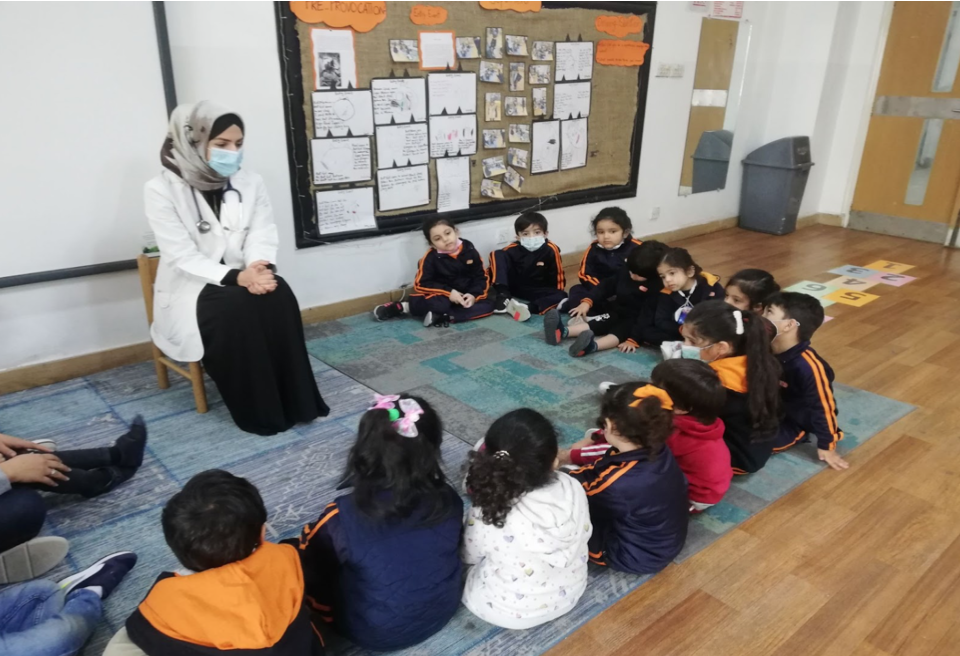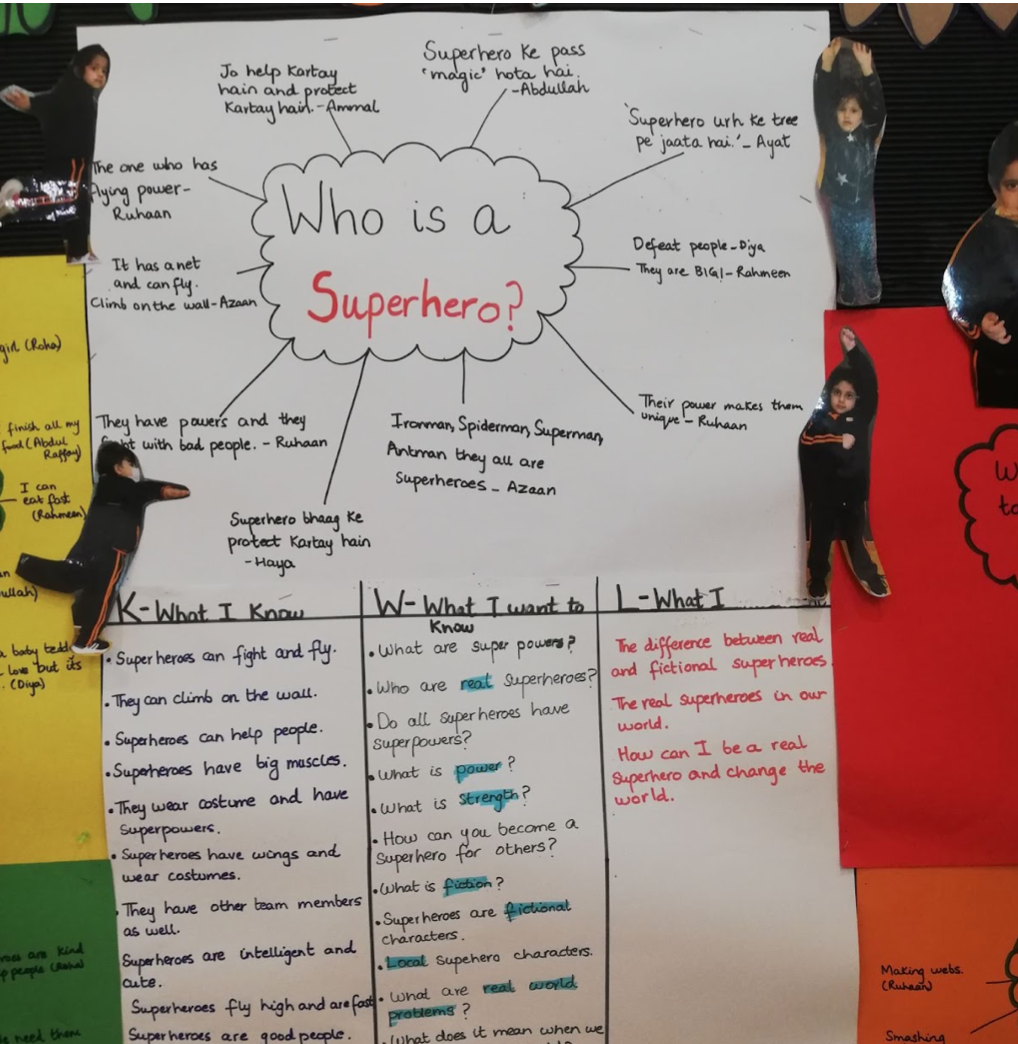I am a Superhero
I am Maryum Ali Chohan and TNS Beaconhouse has been my teaching home for the past two years. I have taught in Nursery (3 and 4 year olds) exclusively. We use a co-teaching model in our school .
I would like to offer a detailed peek into our current project that came about by spending a lot of time watching and listening to the kids and trying to figure out what interested them. In PBL, one of the aims is to teach the curriculum and standards by using the students' interests. When doing this, we use the academics they need while they investigate things that they are interested in. This makes them excited to learn and they then automatically use these skills that are needed during investigations. Sometimes, the interests are explored in small groups, but sometimes, an interest is widespread and covers most of the kids in the class. This year this widespread interest was superheroes.
In this project, students explored and analyzed real superheroes - meaning those people in our community who save others (i.e. doctors, nurses and police officers), developed their own “super-hero” and introduced this new hero to the world through a customized costume and name.
Driving Question: How can we be superheroes to our community?
Our Project Beginnings
This major interest in superheroes was obvious ever since the beginning of the year. Every time there was a Halloween or a class party we saw most of the kids turning in superhero costumes. To our surprise half of the class has bags and water bottles Avenger themed! That's when we knew that we would have to figure out a way to do a superhero inquiry, but we were unsure how we would integrate key skills and knowledge into the project. I wondered if there were enough curriculum/strands that I could include. I kept thinking that there was nothing about superheroes in our science or social studies standards. Once I started brainstorming and putting my ideas down on a web map, I was amazed at how much curriculum I could cover!
Entry Event/Launch
We kicked off the project by asking our students to share some of their favorite superheroes. In preparation for the study we had already stocked the classroom with superhero books. We also put books on community heroes. Some were picture books, and some were junior graphic novels designed like comic books but with age-appropriate content.
We began the study with a group gathering to list what they knew about superheroes and what they were curious about. One of the thinking routines we relied heavily on here was called “Can, Have, Are.” The purpose of this routine was to check prior knowledge of the students. We used it to organize our thinking about specific superheroes like Spiderman, and about Superheroes in general. Each time we used it, the children got more skilled at communicating their ideas.
The class spent the whole first week coming up with their stories. The class focused on superhero names, costumes, and superpowers. This let us see what the children were already thinking about superheroes, what knowledge gaps they might have, and whether there were any ideas we wanted to challenge. For example, we wanted to help the children question the idea that girls can’t be superheroes. So as an additional learning experience, a mother visited the classroom dressed up as a Batwoman. It spiked further interest and inquiry.
As we watched, we realized that their scenarios weren’t evolving because children’s knowledge of superheroes was limited to the “chase, catch, and kill-bad-guys” scenarios presented in popular media. If we wanted to inspire deeper thinking, (i.e. that heroes are not only fictional comic characters but that there are real heroes in our communities), we had to provide more information and change the narrative and scope of the project.
What is a Superhero?
We wanted to deepen children’s thinking about superheroes so that they would learn and see how to differentiate comic/fictional superheroes from real heroes; those people who serve the community, often saving others’ lives.
We wanted children to think about why superheroes do what they do, not just how they do it. By focusing on the idea that superheroes help people, we opened children’s eyes to the real-life “super-heroes” they encounter every day. In a previous social studies unit, we helped the children understand that a community is a group of people living or working together in the same area. They also knew that superheroes are the fictional characters they have seen on screen.
We invited the school nurse, who volunteers a lot in the community, to talk about volunteering and what she does to help people. Two important points came from our discussions: “super-heroes” help other people, and even though they don’t always get thanked, superheroes often feel good about helping.
Learning about superheroes also helped us to explore social skills. We talked about the qualities of superheroes and how we should all strive to have these same qualities and behaviors; being strong, brave, kind and helpful. For reading comprehension, we read about a superhero and created a tree map to organize what we learned about them from the book. They seemed to enjoy comparing and contrasting the characters. A lot of creativity and critical thinking skills were used here!
Public Product
The public products for this project were art-based and children reflected the traits of real-life human superheroes. They considered the traits they wanted to have and then used their imaginations to create an image representing the superpowers they might possess if they were fictional characters. The created superheroes were very authentic. For example, a child who struggled to finish his lunch in break time decided his “super power” would be to finish his food by himself. Another child who sang well imagined that singing was his superpower, and he sang a song for the class on the final presentation.
Through both projects, the students demonstrated learning in both academic and social skills. It was meaningful to hear children express how they hoped to embody characteristics of real-life “super-heroes” and that all of us can strive to have these same qualities and behaviors in life.
Maryum Ali Chohan has taught preschool for the last four years and has been a PBL practitioner for the last two. She currently teaches at TNS Beaconhouse DHA, an IB School that introduced PBL for the first time in Pakistan.




